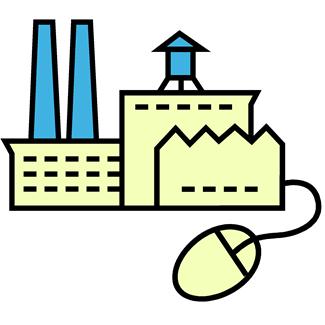 Overview of modeling
Overview of modeling
Unlike most other operations-improvement consultancies, Simitar is expert in computer-simulation modeling.
When operations are highly complex or variable, computer-simulation modeling can reveal huge opportunities for savings that spreadsheet models—and even experienced observers—overlook. That’s because simulation models take into account the variability present in real life. Simulation models also include a critical factor that spreadsheet models ignore: cycle time, and how it varies with load.
Once optimal parameters are found in the simulation model, they can be applied to the real operation. The result can be significant improvement in all aspects of operations performance, as well as reduced capital-equipment expenditures.
Any type of operation can be modeled
Essentially any manufacturing, service, or business process can be modeled. Simitar personnel have modeled:
- Entire wafer fabs containing up to 1500 production steps and 170 types of production equipment spanning multiple sites around the world.
- Mid-sized production areas to assess complex interactions between machines and to estimate profit-maximizing staffing levels.
- Individual pieces of production equipment for internal throughput optimization.
Service industries and business processes are heavy beneficiaries of simulation modeling. Examples are hospitals, distribution networks, rail systems, airports, call centers, and claims processors.
A model can help you make thousands of decisions
People unfamiliar with simulation are usually not even aware of the vast variety of questions that a simulation model can answer—they don’t know which questions to ask. Here are a few examples:
- What capital equipment should I order to meet next year’s throughput and cycle-time goals at minimal cost?
- What combination of dispatching rules, setup rules, batching rules, and operator allocations will most improve my throughput, cycle time, on-time delivery, and cost?
- Where are WIP bubbles likely to form during the next shift, and what can I do to preempt them?
One-time or permanent model?
Models can be built for a one-time decision or can be maintained and used on an ongoing basis for continuous improvement and ongoing capacity planning.


 Loading
Loading
Leave a Reply